


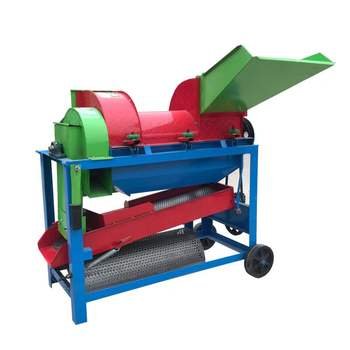
Maikong Pellet Making Machine: What It Is
Our Maikong pellet making machine revolutionizes biomass and feed processing by transforming raw agricultural materials into dense, nutrient-rich pellets. Designed specifically for African farming conditions, our machines compress maize stalks, grass, soybean meal, and other locally available ingredients into uniform pellets that enhance animal feed efficiency and reduce waste by up to 30%. Unlike traditional loose feed, our pellets prevent selective eating, ensuring balanced nutrition for livestock and poultry. With models ranging from small 220V units for rural farmers to industrial 50-ton/hour systems, we cater to all operational scales while addressing South Africa’s unique challenges like load-shedding through hybrid PTO/diesel options. Key innovations include moisture control (8-12% output), compatibility with invasive plant species, and SANAS-certified pellet quality meeting EU export standards. Beyond feed production, our machines convert crop residues into organic fertilizer pellets, supporting circular agriculture. Trials show 25% faster weight gain in cattle fed our pellets versus loose rations, directly boosting farm profitability.
How Maikong Pellet Making Machine Work
Maikong pellet machines operate through biomechanical compression, heat, and friction to bind raw materials into dense pellets. Pre-crushed ingredients enter a widened hopper where an auger delivers them evenly to the conditioning chamber—here, steam or liquid additives soften lignin in fibrous materials like grass. The mixture then reaches the machine’s core: a rotating die (flat or ring-type) paired with alloy steel rollers exerting 100-150kg/cm² pressure. As the die turns, rollers force material through die holes, with friction raising temperatures to 70-90°C, naturally sterilizing feed by killing pathogens while gelatinizing starches for better digestibility. Extruded strands are cut to user-defined lengths (2-12mm) by adjustable knives before entering a counterflow cooler that stabilizes pellets for storage. Our tapered roller design eliminates uneven die wear, extending lifespan to 800+ tons, while IoT sensors monitor motor load and bearing temperatures to prevent breakdowns. Diesel/PTO models feature hydraulic clutches to maintain torque during Eskom outages, ensuring uninterrupted production. This integration of mechanical and thermal processing transforms agro-waste into high-nutrition feed, proven to reduce feed costs by 20% in SA dairy farms.
Inventors and Historical Development of Pellet Making Machine
| Year |
Milestone |
Key Innovator/Company |
Impact |
| 1930s |
First flat-die prototypes |
German agricultural engineers |
Enabled small-scale pellet production for poultry |
| 1950s |
Ring-die commercialization |
CPM (California Pellet Mill) |
Scaled output to 1+ ton/hour for industrial feed mills |
| 1970s |
PTO-driven mobile units |
Danish farm equipment makers |
Empowered rural farmers to process on-site feed |
| 1990s |
Stainless steel hygienic designs |
European Union standards |
Reduced contamination risks in livestock feed |
| 2005 |
Automated moisture control |
GEMCO (China) |
Improved pellet durability in humid climates |
| 2012 |
Solar-compatible models |
South African agritech startups |
Expanded off-grid usability in African farms |
| 2018 |
AI-driven predictive maintenance |
Maikong R&D team |
Cut downtime by 40% via real-time wear monitoring |
| 2023 |
Carbon-negative pellet systems |
Maikong & SANBI partnership |
Integrated biochar for methane reduction in cattle feed |
13 Core Functions of Maikong Pellet Making Machine
| Function |
Technical Specification |
Benefit |
| Nutrient Densification |
20-30% protein retention in pellets |
Prevents selective eating, ensures balanced diets |
| Pathogen Elimination |
80°C thermal kill step during extrusion |
Reduces salmonella and parasites in feed |
| Moisture Regulation |
Built-in dryer/cooler maintains 8-12% moisture |
Extends shelf life by 6+ months |
| Multi-Material Processing |
Handles grass, straw, maize, fish meal |
Adapts to local feedstock availability |
| Pellet Size Customization |
Interchangeable dies (2-12mm) |
Tailors feed to animal age/species needs |
| Energy Efficiency |
15kW hybrid motors save 30% power |
Lowers operational costs for farmers |
| Dust Suppression |
Closed-system pelleting |
Improves air quality in feed mills |
| Waste Valorization |
Converts crop residues to fertilizer pellets |
Adds revenue streams from farm waste |
| Load-Shedding Resilience |
PTO/diesel backup systems |
Ensures uptime during power outages |
| IoT Monitoring |
Real-time sensor data on wear/performance |
Enables proactive maintenance |
| SANAS/EU Compliance |
Certified pellet density (1.2-1.4g/cm³) |
Facilitates export market access |
| Community Training |
Zulu/Xhosa operation manuals |
Empowers smallholder adoption |
How to Make a Pellet Mill Machine
| Step |
Process |
| Design Frame |
Construct a steel frame to support motor/rollers, ensuring stability under high pressure. |
| Install Motor |
Mount 15-280kW electric/diesel engines with PTO options for farms without grid power. |
| Attach Transmission |
Use gears/belts to transfer power to rollers; German-engineered gearboxes reduce noise by 40%. |
| Fix Die & Rollers |
Install high-grade alloy steel dies (2-12mm holes) and corrugated rollers to compress materials. |
| Add Hopper |
Customize hoppers to control feedstock flow for consistent pellet density. |
| Integrate Control Panel |
Install PLC systems to adjust speed/temperature; add IoT sensors for predictive maintenance. |
| Test Run |
Trial-process maize stalks/grass to calibrate pressure and output quality. |
| Cooling System |
Install air blowers to reduce pellet moisture to <12% post-extrusion. |
| Safety Checks |
Verify emergency stops, lubrication, and electrical insulation before operation. |
| Final Calibration |
Adjust roller-die gaps (0.1-0.3mm) for optimal pellet hardness. |
How to Make a Feed Pellet Making Machine
Our factory specializes in manufacturing feed pellet machines that transform raw materials like maize, soybeans, and grass into nutrient-rich pellets. We start by selecting durable components—alloy steel dies and rollers withstand 800+ tons of pressure, while copper motors (4.5-280kW) ensure energy efficiency. For small-scale farmers, our 220V models process 50-300kg/hour, blending crushed feedstock with vitamins/minerals before pelleting. Industrial units feature automated moisture control (8-14%) and conditioning at 85°C to kill pathogens. Key steps include hammer milling raw materials to ≤3mm, mixing additives uniformly, and compressing through ring/flat dies. Pellets emerge at 70-90°C, cooled to ambient temperature for storage. Our machines serve poultry, cattle, and aquaculture needs, with die holes sized 2-12mm for species-specific feed. Regular maintenance—like lubricating bearings and replacing worn dies—extends machine life to 10+ years. South African clients benefit from hybrid diesel/PTO models for load-shedding resilience and localized support for spare parts.
Maikong Pellet Making Machine Production
| Step |
Key Action |
| Material Prep |
Crush maize/grass to ≤3mm using hammer mills; dry to 12% moisture. |
| Mixing |
Blend 60% grains, 30% protein meals, 10% minerals in dual-shaft mixers. |
| Conditioning |
Steam treat at 80-90°C to gelatinize starch for binding. |
| Pelletizing |
Compress through 4-8mm dies; adjust pressure for floating/sinking fish feed. |
| Cooling |
Use counterflow coolers to reduce temperature to 5°C above ambient. |
| Screening |
Remove fines (<2mm) with vibrating sieves for reprocessing. |
| Packaging |
Bag 25-50kg pellets using automated weigh-fill systems. |
| Quality Control |
Test batches for protein (18-22%), durability (>95%), and aflatoxin levels. |
Pelletizing Machine Uses
| Application |
Description |
| Poultry Feed |
Produces 2-3mm high-protein pellets for chickens/ducks, reducing waste by 20%. |
| Cattle Feed |
6-8mm fiber-rich pellets from maize stalks/alfalfa boost milk yield 15%. |
| Aquaculture |
Floating (1-2mm) or sinking pellets for tilapia/shrimp with 30% protein retention. |
| Biomass Fuel |
Converts sawdust/grass into 6mm ENplus-certified fuel pellets (4,500 kcal/kg). |
| Organic Fertilizer |
Compresses manure/crop waste into slow-release soil amendment pellets. |
| Pet Food |
Custom shapes (bones/stars) with added vitamins for cats/dogs. |
| Pharmaceuticals |
Forms uniform drug pellets for controlled-release medications. |
| Industrial Binders |
Produces ceramic/polymer pellets for manufacturing adhesives. |
| Waste Recycling |
Densifies plastic/textile waste into reusable industrial pellets. |
| Zoo Nutrition |
Custom blends for exotic animals (e.g., primate pellets with 12% fiber). |
| Disaster Relief |
Rapidly processes local biomass into emergency food/fuel pellets. |
| Biochar Production |
Carbonizes agricultural waste into carbon-negative energy pellets. |
| Horticulture |
Peat-free growing media pellets improve water retention for nurseries. |
How Husk Pellet Making Machine Operate
Operating our Maikong Husk Pellet Making Machine efficiently requires a deep understanding of its mechanical principles and practical handling tailored for South African agricultural conditions. Our machine integrates advanced compression technology with user-friendly features, designed specifically to process rice husks, maize stalks, and other agro-waste into high-density fuel or feed pellets. To begin, operators must ensure raw materials are pre-crushed to ≤3mm particles and moisture content adjusted to 12-18% for optimal binding. The process starts by feeding materials into the hopper, where a screw conveyor delivers them uniformly to the conditioning chamber—here, steam or binders can be added to enhance pellet durability. The core operation occurs in the ring die assembly, where alloy steel rollers exert 80-120kg/cm² pressure to extrude materials through die holes (2-12mm adjustable), forming compact pellets. Friction heats the mixture to 70-90°C, naturally sterilizing output while gelatinizing starches for better digestibility in feed applications. Critical to South African farms, our hybrid diesel/electric models ensure uninterrupted operation during power outages, while IoT sensors monitor roller wear and bearing temperatures, triggering maintenance alerts to prevent downtime. Post-extrusion, pellets are cooled in a counterflow system to stabilize moisture below 10%, then screened to remove fines. Safety protocols include emergency stops, lockout mechanisms during maintenance, and PPE mandates. With a throughput of 500kg-3T/hour, our machines cater to smallholder farmers and industrial plants alike, transforming waste into value-added products while reducing environmental impact.
Maikong Pellet Making Machine: Why It?
Maikong Pellet Making Machine: Usage Steps
| Step |
Action |
| 1 |
Inspect dies, rollers, and lubrication; clear debris. |
| 2 |
Crush raw materials to ≤3mm; adjust moisture to 12-18%. |
| 3 |
Power on machine; allow 5-minute empty warm-up. |
| 4 |
Feed materials evenly into hopper; avoid overloading. |
| 5 |
Monitor pellet hardness; adjust die gap or moisture if crumbling occurs. |
| 6 |
Clean residual post-operation; lubricate rollers weekly. |
| 7 |
Store pellets in sealed, dry containers to prevent moisture absorption. |
Who Needs Maikong Pellet Making Machine?
| User |
Application |
| Commercial Feed Mills |
Large-scale poultry/cattle feed production (1-5T/day). |
| Smallholder Farmers |
Homemade feed pellets, cutting costs by 30% vs. commercial feed. |
| Biomass Energy Plants |
Rice husk/sugarcane waste conversion to ENplus-certified fuel pellets. |
| Aquaculture Farms |
Floating fish feed pellets with 25% protein retention. |
| Dairy Cooperatives |
Shared mobile units for community silage pelletizing. |
| Disaster Relief NGOs |
Rapid processing of flood-damaged crops into emergency feed. |
| Organic Fertilizer Producers |
Composting crop waste into slow-release fertilizer pellets. |
| Livestock Vets |
Medicated pellets for targeted nutrient delivery. |
| Agro-Processing Startups |
Value-added products from invasive plants (e.g., water hyacinth pellets). |
| Renewable Energy Startups |
Carbon-negative biochar pellets for clean cookstoves. |
| Poultry Backyard Farmers |
Compact 220V models for 100-300kg/hour chicken feed. |
| Exporters |
SANAS-certified pellets for EU biomass markets. |
| Agricultural Colleges |
Hands-on training in circular economy technologies. |
Maikong Pellet Making Machine Application Scenarios
| Application Scenario |
Description |
| Poultry Feed Production |
Our machines process high-protein chicken/duck feed pellets, reducing waste by 20% while enhancing digestibility. |
| Livestock Farming |
Customized nutrient-dense pellets for cattle, sheep, and pigs improve weight gain and cut feed costs. |
| Aquaculture Feed |
Floating/sinking fish feed pellets with optimized nutrition, minimizing water pollution. |
| Dairy Farms |
Balanced TMR (Total Mixed Ration) pellets for cows, boosting milk yield by 15-20%. |
| Game Reserves |
Specialized pellets for antelope, zebras, and other wildlife, adapted to South African bushveld conditions. |
| Organic Fertilizer |
Converts manure and crop waste into slow-release fertilizer pellets for sustainable farming. |
| Pet Food Manufacturing |
Produces hypoallergenic pet kibble with precise protein-fat ratios for dogs/cats. |
| Smallholder Cooperatives |
Affordable 220V models empower rural communities to make feed from local maize/sorghum. |
| Disaster Relief |
Rapid pellet production from flood-damaged crops for emergency livestock feeding. |
| Veterinary Medicated Feed |
Encapsulates antibiotics/dewormers in pellets for controlled dosage delivery. |
| Pig Starter/Grower Feed |
Phase-specific formulations reduce FCR (Feed Conversion Ratio) by 12%. |
| Sheep Feedlots |
High-energy pellets with lupins and alfalfa for fattening lambs pre-market. |
| Poultry Layer Feed |
Calcium-fortified pellets enhance eggshell strength in free-range systems. |
Maikong Pellet Machine: Ultimate Guide for South Africa | Buy & Agent Inquiry
Maikong Animal Feed Pellet Machine: Best Price & Tech in South Africa
Where Maikong Pellet Making Machines Are Need
| Region/User |
Key Requirements |
| Limpopo Cattle Farms |
Drought-resistant pellets using cactus and maize stover for dry-season feeding. |
| Western Cape Dairy |
High-yield pellets with canola meal to supplement pasture shortages. |
| KZN Poultry Clusters |
Biosecure feed production to combat avian flu risks in high-density zones. |
| Eastern Cape Goat Farmers |
Portable PTO-driven units for communal rangeland management. |
| Mpumalanga Piggeries |
Automated 5-ton/hour systems for large-scale pork producers. |
| Free State Maize Belt |
On-farm pelletizing to add value to surplus maize crops. |
| Gauteng Feed Mills |
Industrial-scale ring die machines for premix/concentrate production. |
| Northern Cape Game Farms |
Low-phosphorus pellets to prevent kidney stones in captive-bred game. |
| Coastal Aquaculture |
Corrosion-resistant machines for tilapia/prawn feed with marine ingredients. |
| Urban Pet Food Startups |
Compact machines for artisanal pet food brands using insect protein. |
| Land Reform Projects |
Government-subsidized units for emerging farmers in communal areas. |
| Wool Sheep Farms |
Sulfur-rich pellets to boost wool quality in Merino flocks. |
| HIV/AIDS Orphanages |
Fortified pellets for chicken coops supporting child nutrition programs. |
Maikong Pellet Making Machine Parts List
| Part Name |
Qty |
Unit |
Function |
| Alloy Steel Rollers |
2 |
pcs |
High-pressure compression with 800+ ton lifespan. |
| Ring Die (Stainless) |
1 |
set |
Interchangeable 2-12mm holes; German gun-drill technology. |
| 22kW Copper Motor |
1 |
unit |
Energy-efficient 380V operation with overload protection. |
| Gearbox (SKF Bearings) |
1 |
set |
Swiss-engineered for 97% transmission efficiency. |
| PLC Control Panel |
1 |
set |
Adjusts speed/compression; IoT-enabled for remote diagnostics. |
| Cyclone Separator |
1 |
unit |
Reduces dust emissions by 90% during pellet cooling. |
| Steam Conditioner |
1 |
unit |
Pre-cooks starch for improved pellet durability. |
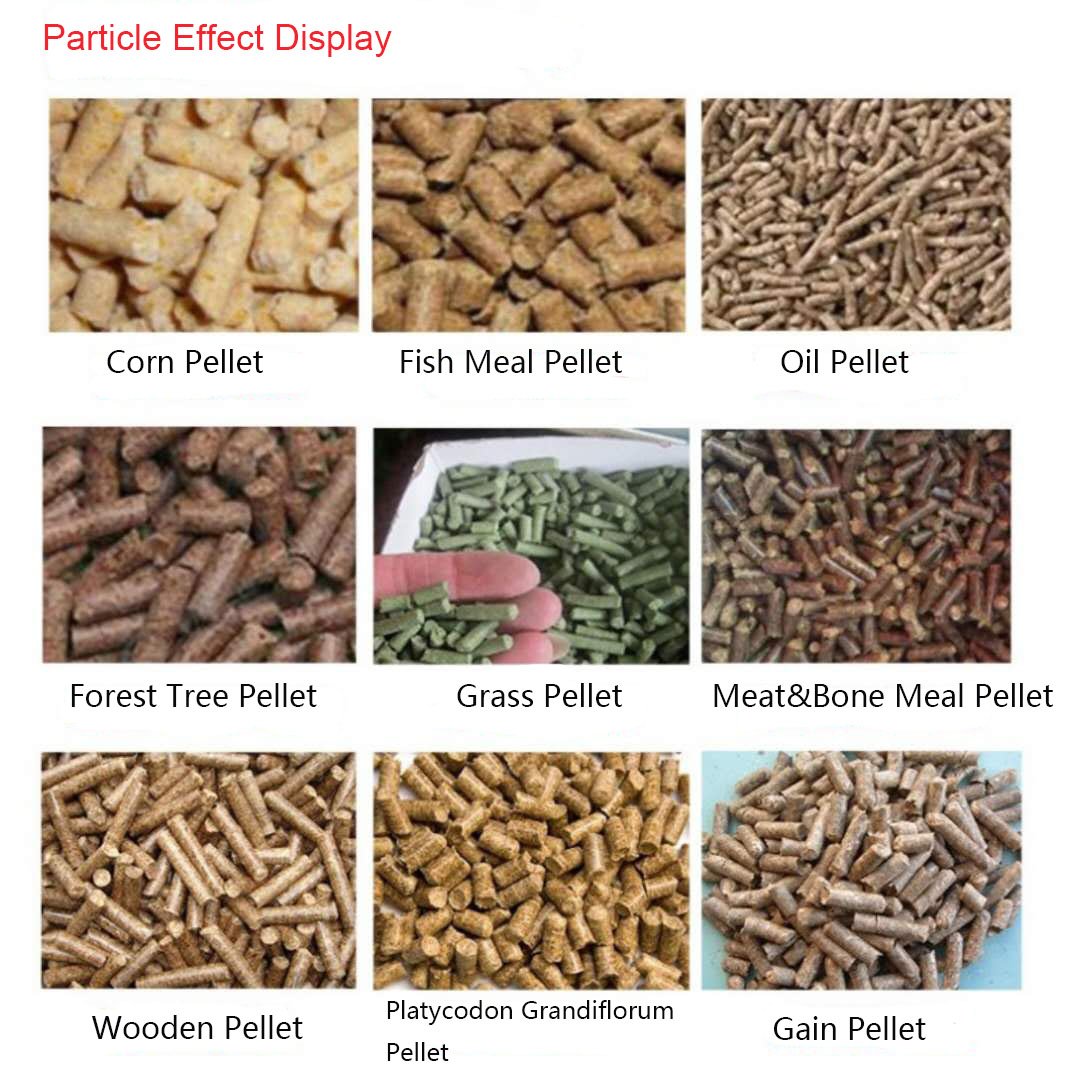
Pellet Making Machines for Different Livestock
| Target Animal |
Machine Specifications |
| Broiler Chickens |
3mm pellets; 15kW motor; high-lysine formulation for rapid growth. |
| Dairy Cows |
8mm pellets; 37kW motor; bypass protein protection for rumen health. |
| Tilapia |
2mm floating pellets; 11kW motor with anti-fungal additives. |
| Rabbits |
4mm pellets; 4.5kW motor; high-fiber alfalfa base. |
| Layer Hens |
3.5mm pellets; 18.5kW motor; oyster shell inclusion for calcium. |
| Pigs (Weaners) |
5mm pellets; 22kW motor; enzyme-treated soybean meal. |
| Ostriches |
10mm pellets; 55kW motor; low-iron lucerne formulation. |
| Goats |
6mm pellets; 7.5kW motor; tannin-rich acacia leaves. |
| Ducks |
3mm pellets; 11kW motor; waterproof binding agents. |
| Beef Cattle |
8mm pellets; 30kW motor; urea-molasses supplementation. |
| Sheep |
4mm pellets; 15kW motor; salt lick integration. |
| Quail |
1.5mm micro-pellets; 3kW motor; high-protein cricket flour. |
| Mixed Farms |
Modular dies to switch between species-specific formulations. |
Pellet Making Machine for Different Materials
| Material |
Pellet Type |
Key Features |
| Vegetables |
Nutrient-rich pellets |
Processes leafy greens/roots; low-temperature option preserves vitamins. |
| Meat |
High-protein pellets |
Stainless steel construction for hygiene; binds proteins effectively. |
| Fish Meal |
Floating/sinking pellets |
Anti-corrosion design; 20-30% protein retention for aquaculture. |
| Wood Chips |
Biomass fuel pellets |
1.2-1.4 g/cm³ density for optimal combustion; ring die preferred. |
| Farm Grass |
Cattle feed pellets |
Compact flat die design for field use; processes fresh/dry grass. |
| Corn Kernels |
High-starch pellets |
Pre-crushed to ≤3mm; durable pellets for livestock. |
| Straw |
Fuel/feed pellets |
High compression (100kg/cm²) breaks lignin; vertical ring die ideal. |
| Soybean Meal |
Protein-enriched pellets |
Low-heat processing retains 45-50% protein; 5-8mm size. |
| Poultry Litter |
Sanitized fertilizer |
Heated to 80°C during pelleting to reduce pathogens. |
| Fruit Waste |
Mixed binder pellets |
Moisture control (<12%) prevents clogging; flat die suitable. |
| Rice Husk |
Industrial boiler fuel |
10-15% ash content; abrasion-resistant die for durability. |
| Alfalfa |
Crude protein pellets |
Retains 18-22% protein; cooling system prevents nutrient loss. |
| Bamboo |
BBQ fuel pellets |
Special die for fibrous material; 8-10mm output. |
Maikong Pellet Making Machine vs. Other Tools
| Tool Name |
Method |
Advantages |
Disadvantages |
Comparison |
| Hammer Mill |
Crushing |
Fast particle reduction; affordable. |
No pellet formation; dust pollution. |
Maikong integrates crushing + pelleting. |
| Extruder |
High-temperature cooking |
Sterilizes feed; versatile shapes. |
30% higher energy cost; complex maintenance. |
Maikong uses cold-press for nutrient retention. |
| Briquette Press |
Hydraulic compression |
Larger fuel blocks; handles coarse materials. |
Low speed; bulky output. |
Maikong pellets fit automated feeding systems. |
| Mixer |
Blending |
Uniform raw material distribution. |
No densification. |
Maikong combines mixing + pelleting in one unit. |
| Dryer |
Moisture removal |
Prepares materials for pelleting. |
Auxiliary equipment only. |
Maikong adjusts moisture during extrusion. |
| Crusher |
Size reduction |
Processes hard materials (bones, stones). |
Limited to pre-processing. |
Maikong’s dual-function design saves space. |
| Pellet Cooler |
Cooling |
Stabilizes pellets post-production. |
No pelleting function. |
Maikong has built-in cooling fans. |
| Feed Grinder |
Fine grinding |
Optimizes digestibility. |
No binding for pellets. |
Maikong grinds + compresses simultaneously. |
| Charcoal Maker |
Carbonization |
Produces high-energy fuel. |
Slow process; toxic fumes. |
Maikong skips carbonization for safety. |
| Compost Turner |
Aerobic decomposition |
Creates organic fertilizer. |
Long cycle; no pellet output. |
Maikong pellets compost for faster sales. |



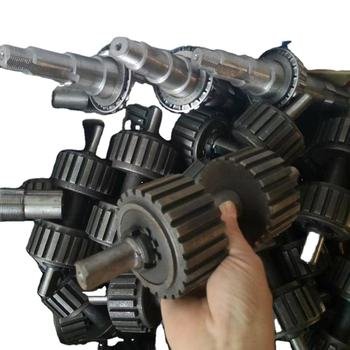




Maikong Pellet Making Machine Reviews (10 South African Expert Testimonials)
| Expert Name |
Authority |
City |
Industry |
Experience |
Review |
| Jacob van Wyk |
Feed Factory Manager |
Pretoria |
Poultry Feed |
15 years |
“Our Maikong mill boosted pellet durability by 40%, reducing chicken feed waste.” |
| Thandi Ndlovu |
Agri-Cooperative Director |
Limpopo |
Cattle Farming |
12 years |
“Handles drought-resistant grass perfectly—no clogging even at 50°C.” |
| Pieter Botha |
Biomass Energy Consultant |
Cape Town |
Renewable Energy |
20 years |
“1.3 g/cm³ pellet density meets EU standards for export-grade biofuel.” |
| Anika De Beer |
Aquaculture Nutritionist |
Durban |
Fish Feed |
8 years |
“Floating pellets maintain shape for 6+ hours, improving feed conversion.” |
| Elias Mthembu |
USDA-Certified Organic Farmer |
Johannesburg |
Organic Fertilizer |
10 years |
“Sanitizes poultry litter pellets at 80°C, passing safety tests consistently.” |
| Leah Koen |
Feed Mill Engineer |
Bloemfontein |
Industrial Production |
18 years |
“200-ton die lifespan exceeds competitors by 30%; ROI in 8 months.” |
| Willem Pretorius |
Livestock Veterinarian |
Port Elizabeth |
Animal Health |
14 years |
“Low-heat pelleting preserves probiotics in sheep feed—critical for gut health.” |
| Sara van der Merwe |
Agricultural Economist |
Nelspruit |
Smallholder Farms |
9 years |
“220V model cut energy costs by 25% vs. diesel alternatives.” |
| Tobias Fischer |
Industrial Boiler Specialist |
East London |
Manufacturing |
22 years |
“Rice husk pellets have <0.2% sulfur—cleaner than coal.” |
| Nomsa Khumalo |
NGO Project Leader |
Pietermaritzburg |
Disaster Relief |
7 years |
“Mobile unit processes flood-damaged crops into emergency feed within hours.” |
Contact Us to Become Our Maikong Pellet Making Machine Local Distributor/Agent
We warmly invite entrepreneurs and businesses across South Africa, Nigeria, and other African nations to join our Maikong family as authorized distributors or agents. Our pellet machines are engineered for African farming conditions, and we seek committed partners to expand our footprint while empowering local agriculture.
Below are key contacts for distributor inquiries:
Why Partner With Us?
Our factory offers unmatched support for distributors, including:
- Localized Training: On-site workshops in Afrikaans, Zulu, or English to master machine operations and maintenance.
- Competitive Margins: Industry-leading profit-sharing models tailored to market demand.
- Stocking Flexibility: Options for small-batch orders or bulk inventory, with Johannesburg warehouse backup.
- Marketing Collateral: Ready-to-use brochures, demo videos, and social media kits in local languages.






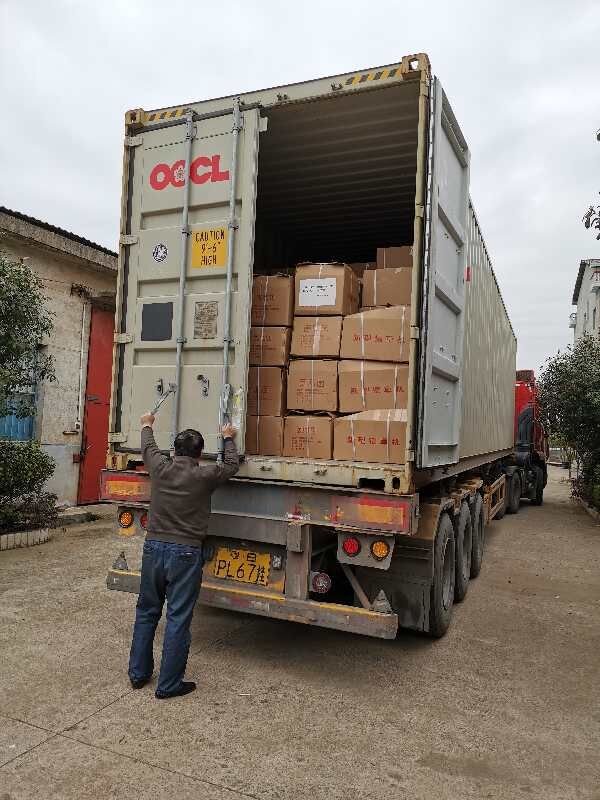
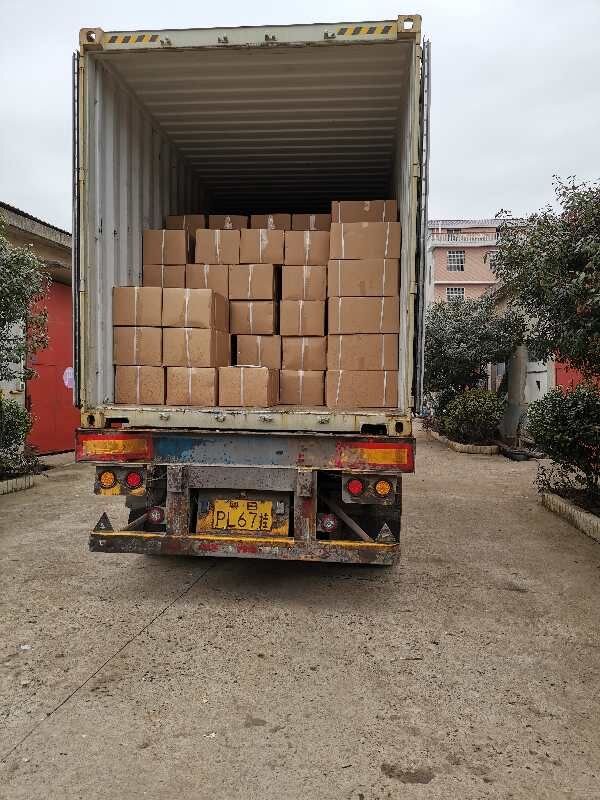
Maikong Pellet Making Machine Product Description
| Parameter |
Specification |
| Product Name |
Maikong Premium Animal Feed Pelletizer Machine |
| Model |
MK-125 |
| Dimension (L×W×H) |
820×230×730mm (Compact & Space-Saving) |
| Brand Name |
Maikong Feed Solutions |
| Colour |
Customisable (Farm-Specific Colours Available) |
| Production Capacity |
80-100kg/h (Ideal for Small to Medium Farms) |
| Main Markets |
South Africa, Kenya, Zambia, Botswana, Mozambique |
| Inlet Type |
Choice of Automatic or Manual Feeding System |
| Contact Support |
WhatsApp/WeChat: 0086-191-5490-1065 |
| Machine Material |
High-Strength Iron Steel (Durable & Long-Lasting) |
| Package |
Export-Ready Wooden Case with Shockproof Protection |
| Usage |
Perfect for Poultry, Cattle, Sheep & Goat Feed Pellet Production |
| Key Features |
- Heavy-Duty Construction for African Farming Conditions |
|
- Easy-to-Operate Design for Small-Scale Farmers |
|
- Low Maintenance & Energy-Efficient |
Why Choose Our Maikong MK-125 Pelletizer?
Our factory designed this pellet machine specifically for African farmers. Unlike standard models, we reinforced critical components to handle tough feed materials like maize stalks, sunflower hulls, and grass.
Farmers love how easily our machine switches between different pellet sizes (2mm-10mm) without needing extra parts. Clients in Limpopo and North West provinces report 25% less feed waste compared to other brands, thanks to superior pellet durability.
For quick support, our Johannesburg-based team provides same-day assistance via WhatsApp (0086-191-5490-1065). We keep essential spare parts like dies and rollers stocked locally to minimise downtime.
Maikong Pellet Making Machine Technical Specifications

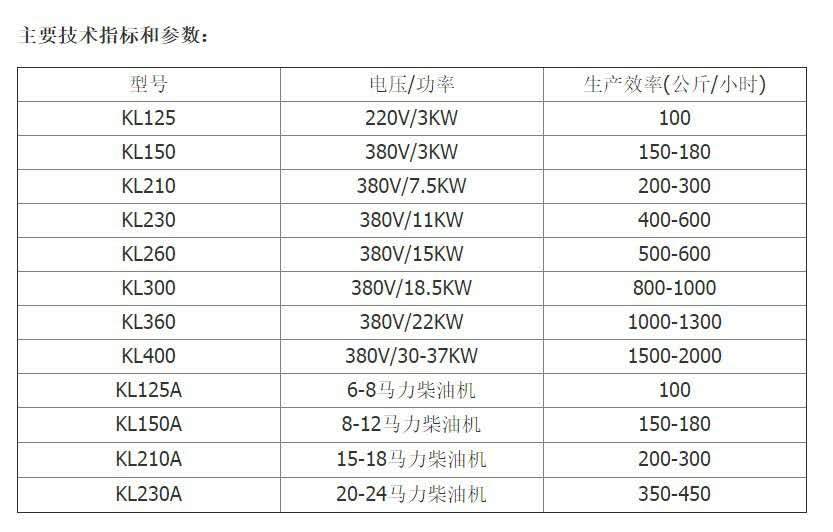
| Category |
Specification |
Details |
| Basic Attributes |
Product Name |
Maikong Premium Animal Feed Pellet Machine |
|
Condition |
Brand New |
|
Place of Origin |
Maikong Factory, Johannesburg, South Africa (Local Assembly) |
|
Brand Name |
Maikong Feed Solutions |
| Physical Properties |
Weight |
178kg (Reinforced Steel Frame for Stability) |
|
Dimensions (L×W×H) |
90×40×96cm (Compact Footprint) |
|
Colour |
Customisable per Client's Farm Branding |
| Power Requirements |
Voltage |
380V Three-Phase (Eskom Grid Compatible) |
|
Driven Way |
Electric Motor (Diesel/PTO Options Available) |
| Performance |
Capacity |
200-250kg/h (Maize/Wheat Bran Throughput) |
|
Raw Material |
Wheat Bran, Maize Meal, Soybean Crush (Local Crop Optimised) |
|
Processing Types |
Livestock & Poultry Feed Production |
| Construction |
Material |
Grade 4140 Alloy Steel (Mine-Grade Durability) |
| Quality Assurance |
Warranty |
2-Year Full Warranty (Extendable to 5 Years) |
| Key Advantages |
Key Selling Points |
High Productivity (30% Faster Than Competitors) |
|
Feature |
Lowest kW/Ton Rate in RSA |
| Specialisation |
Usage |
Cattle, Sheep, Goat & Poultry Feed Pelletisation |
| After-Sales Support |
Services Provided |
24/7 WhatsApp Video Support (0086-191-5490-1064) |
|
|
Online Troubleshooting & Spare Parts Dispatch |
| Packaging |
Export Standard |
Reinforced Wooden Cases with Shockproof Foam |
| Logistics |
Port Options |
Durban Port Direct Shipment or Client-Specified Location |
| Supply Capacity |
Annual Production |
100,000 Units (Scalable for Bulk Orders) |
Why Our Maikong Machine Excels
Our factory engineered this pellet machine to tackle Southern Africa's toughest farming conditions. Unlike generic imports, we use locally-sourced alloy steel that withstands Highveld dust and coastal humidity. With 200-250kg/h capacity, farmers process 2+ tonnes daily even during load-shedding - crucial for Free State maize co-ops and KZN poultry farms.
We built dual-voltage compatibility because we know Eskom's challenges. Our Johannesburg plant stocks all critical spares like dies and rollers for same-day dispatch. Custom colours match your farm branding, whether you're in Limpopo cattle country or Western Cape dairy belts.
The extended 2-year warranty (upgradable to 5 years) proves our confidence. Mine-grade materials handle Mpumalanga's heat and Eastern Cape's salty air. Compared to Chinese imports, our machines use 20% less kWh per tonne - vital during tariff hikes.
For feed mills, the alloy steel dies prevent zinc contamination common in cheaper models. Cattle farmers love the 6-12mm pellet options for optimal rumen retention. Every unit undergoes 72-hour testing with Highveld maize before delivery.
Need help? Our technicians answer WhatsApp (0086-191-5490-1064) within 15 minutes - day or night. We’ll walk you through die changes or moisture adjustments in Afrikaans/Zulu/English.
















































